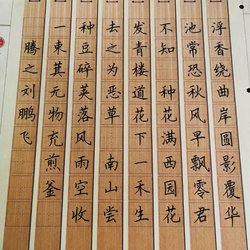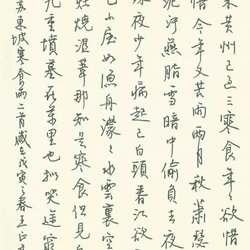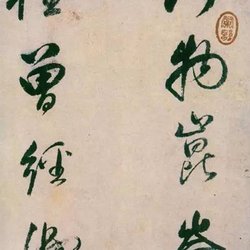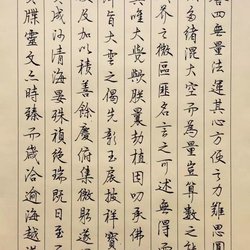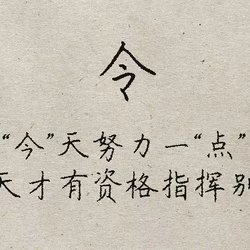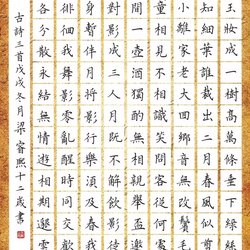Appreciation of regular hard pen calligraphy works
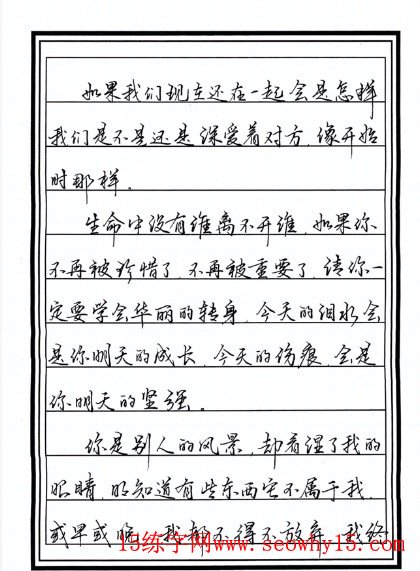
Pictures of calligraphy works in regular script and hard pen 1
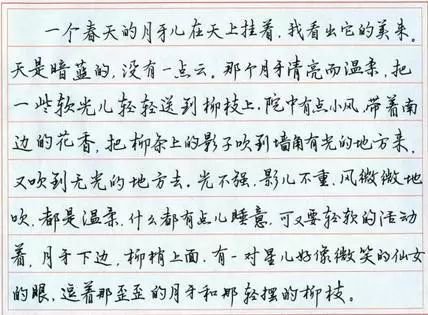
Pictures of calligraphy works in regular script and hard pen 2
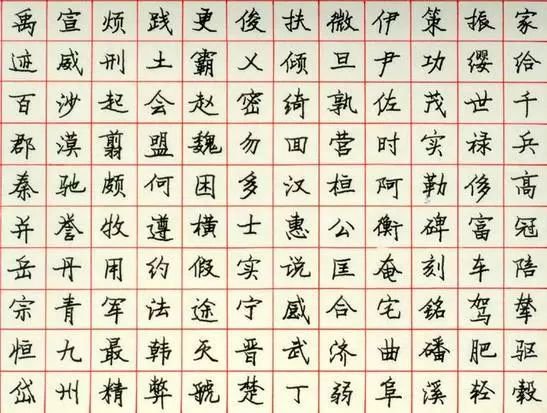
Pictures of calligraphy works in regular script and hard pen 3
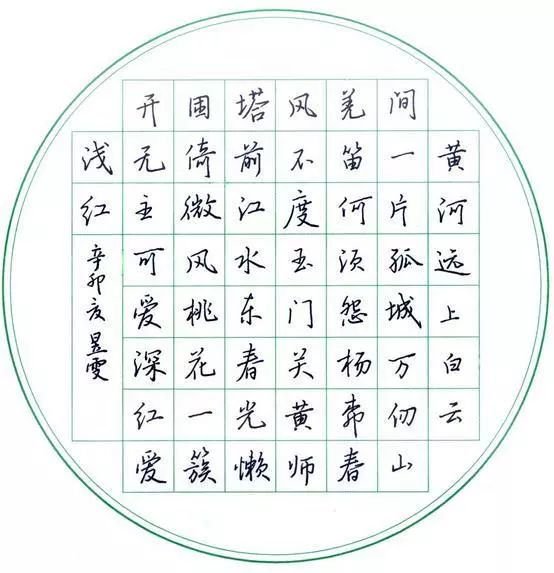
Pictures of calligraphy works in regular script and hard pen 4
The development history of running script
Wang Xianzhi is the seventh son of Wang Xizhi, and he is also very good at cursive calligraphy. His representative cursive works include "Mid-Autumn Tie", "Yatou Jiu Tie", "New Wife Dihuang Tang Tie", etc. "Mid-Autumn Tie" is "one of the three blessings". "Yatou Jiu Tie" is also an outstanding example of Wang Xianzhi's calligraphy and ink writing. His writing is free and easy and fluent. Compared with other posts, the style of this post is obviously different. It is extremely elegant, written casually, and has a confident charm.
"New Wife Dihuang Tang Tie" and "Twenty-nine Days Tie" are also among the best works in Wang Xianzhi's travels. The brushwork is elegant, lively and pleasant. In Wang's sect of calligraphy, there is another precious ink mark, which is Wang Xun's "Hou Yuan Tie". Xun is Xi's nephew, and his calligraphy is elegant, vigorous, unrestrained and smooth, "the style of the Eastern Jin Dynasty can be seen before the eyes". Emperor Qianlong of the Qing Dynasty cherished this calligraphy very much and hid it together with Xizhi's "Quick Snow and Clear Calligraphy" and Xian's "Mid-Autumn Calligraphy" in the study of Yangxin Hall, and called this place "Sanxi Hall". The so-called "Three Treasures" are three rare treasures. This post is the earliest surviving authentic copy of famous calligraphy in running script, and is extremely precious. Among them, Xizhi's "Quick Snow and Clear Tie" was listed as "the first of the three treasures".
In the Tang Dynasty, Emperor Taizong Li Shimin was particularly fond of running script, and he loved Wang Xizhi's running script. Due to the advocacy of Emperor Taizong of the Tang Dynasty, the status of running script in the history of calligraphy was further stabilized, especially the running script of the Erwang system, which enveloped the entire Tang Dynasty and became the style of a generation. He himself is also a master of running script. His representative work "Hot Spring Inscription" is based on the example of the two kings. This stele is also the first engraved stone to use running script on the tablet. This is a big leap in the history of running script; it also opens up a new field for running script. During the prosperous Tang Dynasty, a master calligrapher appeared, who pushed Er Wang's running script to a new stage. He is Li Beihai.
Li Beihai, whose given name was Yong and whose courtesy name was Taihe, was known as "Li Beihai" because he served as the prefect of Beihai. While inheriting the two kings, he gave full play to his own characteristics and created Xingkai Yiyi. The so-called "Xingkai" means that the strokes of regular script are integrated with the brushwork of running script, and the structure of running script is absorbed into the elements of regular script. Although this kind of character had been tried before Li Beihai, it was not until Li Beihai's writing that it became truly mature and unified. At that time, Li Yangbing praised him as "the fairy hand in books". Li Beihai wrote very diligently throughout his life. Some people say that he wrote more than 800 tablets in his lifetime, and many famous tablets were written and engraved by himself. The handed down works include "Lushan Temple Stele", "Yunhui General Li Xiu Stele", "Yunhui General Li Sixun Stele", "Fahua Temple Stele", "Donglin Temple Stele", "Ye Youdao Stele" and so on. Among them, the "Lushan Temple Stele" shows the wind god the most.
The person who carved this stele was named Huang Xianhe, but it was actually Li Beihai who carved it himself. Later generations called this stele "three unique features": unique in writing, unique in calligraphy, and unique in engraving.
Yan Zhenqing, an outstanding calligrapher in the Tang Dynasty, not only had a broad and profound art of regular script, but also had extremely high achievements in running script. His running script is strong, strong and majestic. It does not pursue the spirit of carving, but permeates his upright character and bold and passionate emotions. His famous running script works include "Memorial to Nephew", "Combat for Seat", "Liu Zhong Envoy", etc. The calligraphy is tall and straight, and the calligraphy is sincere and sincere, which has been praised by calligraphers of all ages. In the Song Dynasty, Mi Fu was known as the No. 1 Yan calligrapher in "Setting Competition". Xian Yushu, a native of the Yuan Dynasty, rated "The Manuscript of Sacrifice to My Nephew" as the second running script in the world. Some people ranked this post as one of the "Two Bikes" in the world together with Wang Xizhi's "Lanting Preface".
In the Song Dynasty, running script took on a new look. Calligraphers often use calligraphy to express personal knowledge, personality and embrace. Therefore, the ancients commented on the calligraphy of the Song Dynasty and said that "the people of the Song Dynasty admired the meaning". Those who can represent the style of the Song Dynasty should recommend the "Four Schools of the Song Dynasty". The Four Song Dynasties refer to Su Shi, Huang Tingjian, Mi Fu and Cai Xiang.
Su Shi, also known as Zizhan and Dongpo Jushi, was a man of profound knowledge and had made brilliant achievements in ancient Chinese prose, poetry, calligraphy, painting, etc. It can be said that he was a rare genius in history. He advocates learning from nature in calligraphy, so there is an air of innocence in his works. Representative works include: "Dark Clouds in the Sky", "Cold Food", "Red Cliff Ode", "Du Fu's Alder Poems" and so on. "Han Shi Tie" is the most important thing in the world.

